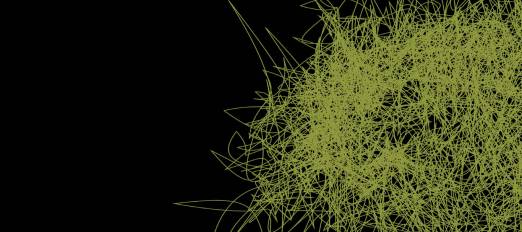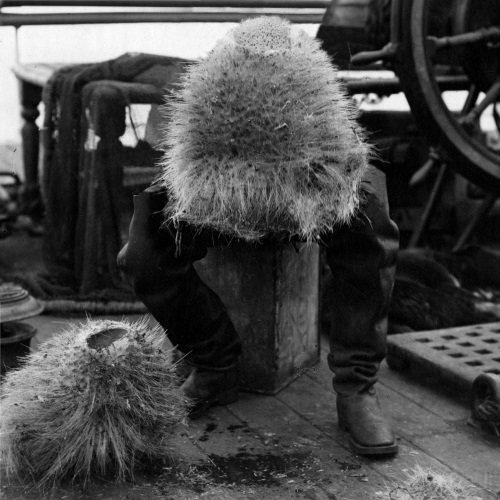Grant Museum of Zoology
1 October to 19 December 2015
Exhibition
Glass Delusions is an exhibition of prints, drawings, videos and objects by the Museum’s artist in residence Eleanor Morgan, exploring the slippery boundary between living and non-living materials. Morgan’s work is inspired by the Grant Museum’s collection of glass sponges – deep-sea animals that naturally build themselves out of glass. These intricate creatures are formed of 90% silica.

Display of Hexactinellid or glass sponges
Over 2015, Morgan explored glass as a material, its cultural significance and the strange history of humans believing they are made of glass - a phenomenon known as ‘the glass delusion.’ In Glass Delusions, Eleanor explores the living and the non-living world of nature and has taken over and painted the Museum in pink and yellow, inspired by the coloration of sponges found around the coast of Britain. Four different areas make up Glass Delusions featuring Eleanor's new work as well objects on loan from the Natural History Museum and the Petrie Museum of Egyptian Archaeology.
In The garden of spongy delights a mirrored print of naked men diving for sponges (some of whom come to a sticky end) forms the backdrop to one of the most beautifully arranged vitrine of glass sponges, a shrimp and a pencil urchin on loan from the NHM for the first time. Opposite this case is an underwater video of the same species of glass sponge - the Venus flower basket - being planted back into its deep-sea home by a robotic arm.
Spicule soup is the largest of the installations running alongside a long pink wall featuring Rock pool, shapes from a direct rubbing using squid ink of a rock pool near Eastbourne. Its colours are taken from those of sponges found around the coast of Britain. As well as photograms of Museum’s sponge specimens within their museum cases and Monotype collagraphs, Spicule soup #1 and #2.
Growing on the bodies of their ancestors reflects on glass sponges’ ability to recycle material from individuals and form an anchor to grow upon and includes The mudlark diamonds’. These microscopic diamonds were created from the dead creatures of the River Thames collected by Morgan. Working with UCL chemists and geologists, Morgan transformed this collection of organisms and debris into the hardest, and most valuable, natural substance on Earth. Included in this work is Birling Gap, a collection of material and prints collected from Birling Gap and features Morgan’s fish prints which were inspired by the traditional Japanese art of fish-rubbing – covering whole dead fish in ink and printing directly from them.
Man, like all animals, is glass and can return to glass includes Laying on, featuring a new stained glass work Morgan created from found glass material.
Events programme
Building on conversations with biologists, chemists, geologists and engineers, the events programme was inspired by Morgan’s work and through a series of making, drawing and printing masterclasses, lunchtime talks, walks looked at the themes of Glass and Re-animation in the exhibition.
Glass
Our collection of Hexactinellids, or glass sponges, share 90% of their make-up with the glass jars that house them. Explore this material as we ask, what makes glass living?

Drawing Master Class: Glass in Museums
Thursday 1 October, 6.30-9pm
Drawing
In Museums, it’s everywhere, specimens made of glass, in glass jars, under glass domes, covered with glass boxes. Look beyond the specimen and set yourself the peculiar challenge of drawing the glass, the overlooked material of museums. Join a Museum artist and some very special objects from the collection for this twilight evening of drawing.
Finding Diamonds along the Thames
Sunday 18 October, 10:30am – 2pm
Walk
Rambling along the foreshore of the Thames you can expect to find a wealth of treasure from the archaeological to the natural, but would you be lucky enough to find a diamond? Join us and the Thames Estuary Partnership on a mud larking walk led by archaeologist Mike Webber, retracing Eleanor Morgan’s footsteps and discover how she managed to make the Mudlark Diamond from her riverside finds.
Making Master Class: Lampworking Glass
Thursday 15 October, 6.30-9pm
Demonstration
Join Dr Shelley James from the Royal College of Art as she invites participants to lampwork glass using the latest generation of portable flameworking torches. During this interactive session you will have the opportunity to explore basic techniques: heating, shaping, blowing simple forms and creating holes to create your own warbling whistles.
Glass techniques: Natural and Historical
Monday 16 November, 10am-4pm
Research Day
One of the most abundant families of materials found on Earth today, silica not only exists in mineral form but also found in living organisms. Eleanor Morgan presents her Glass Delusions and for this research day will bring together artist Dr. Shelley James and scientist Professor Anson Mackay to discuss and demonstrate the historical, contemporary and natural techniques of glass.
Re-animation
68,000 once living animals inhabit the Museum. Now dead and motionless, some mounted on iron frames or submerged in fluid, how can art give these specimens a new life and re-animate them?

Saturday 17 October 11am to 1pm Sluice Fair and Thursday 10 December 6.30-9pm Institute of Making
Demonstration
How did fishermen record the size and species of their catches before the invention of photography? The old Japanese printing technique of Gyotaku or ‘fish rubbing’ provided a solution. Artists Eleanor Morgan and Sam Curtis of the Centre for Innovative and Radical Fishmongery invite you to re-imagine this printing process and to have a go at printing a fish of your own.
Drawing Master Class: Seascapes
Tuesday 3 November, 6.30-9pm
Drawing
Our collection is arranged according to family groups, animals that would have once co-existed together now are found in different cabinets. For one night only we plan on creating a unique seascape and challenging drawers to bring it back to life. Join a Museum artist and some very special specimens for this evening of drawing.
The Glass Creatures of the Sea
Wednesday 25 November, 6.30-9pm
Talk
The Museum’s glass models of invertebrates were created in the 1800’s by the Blaschka company. Join Natural History Museum Curator Miranda Lowe and scientific glassblower Stephen Ramsey as they explore the importance and use of these scientifically accurate models and in a live glass-blowing demonstration uncover how these models were made.
Lunchtime talks
Join historians, scientists and artists as they discuss their research and some of specimens from the Museum’s collection that inspired the artworks of Glass Delusions.

Eleanor Morgan in Conversation
Wednesday 7 October
Find out more about the work and the techniques used to create Glass Delusions with our Leverhulme Trust funded artist in residence Eleanor Morgan.
Egyptian Glass
Wednesday 21 October
Dr. Daniela Rosenow’s from the British Museum investigates of some of the earliest ever glass produced. What can it tell us about the politics, society and economy of Ancient Egypt
People Made of Glass: The Glass Delusion
Wednesday 18 November
Dr. Carol Reeves and Dr. Bill Maclehose from UCL Science and Technology Studies present their research on the history of the glass delusion, a mania that swept across Medieval Europe where people feared they were made of glass.
Glass Sponges: The Living Glass
Wednesday 4 November
Find out more about University of Bristol researcher Dr. Kate Hendry’s work on the chemistry of the enigmatic glass sponges and what they can tell us the climate of the past.
How To Make A Diamond
Wednesday 9 December
Find out more about UCL’s diamond lab from Professor David Dobson and the processes Eleanor Morgan undertook to make the 'Mudlark Diamonds'.
Eleanor Morgan
Eleanor Morgan is an artist based in London working with printmaking, sculpture, video and drawing. She is interested in materials and processes of making, in particular how human making intersects with that of other animals. Morgan’s projects have included rubbing fish, embracing a giant sea anemone and serenading a spider. Her book on the human uses of spider silk, Gossamer days: spiders, humans and their threads, will be published by Strange Attractor Press in spring 2016. More information can be found on her website at eleanormorgan.com

 Close
Close



